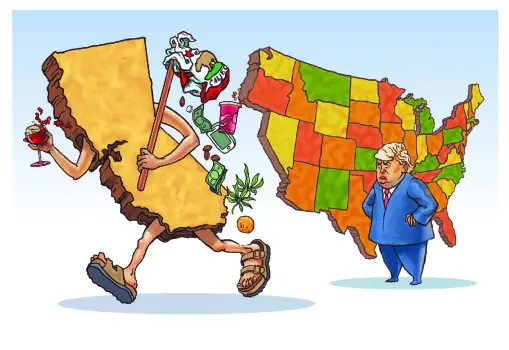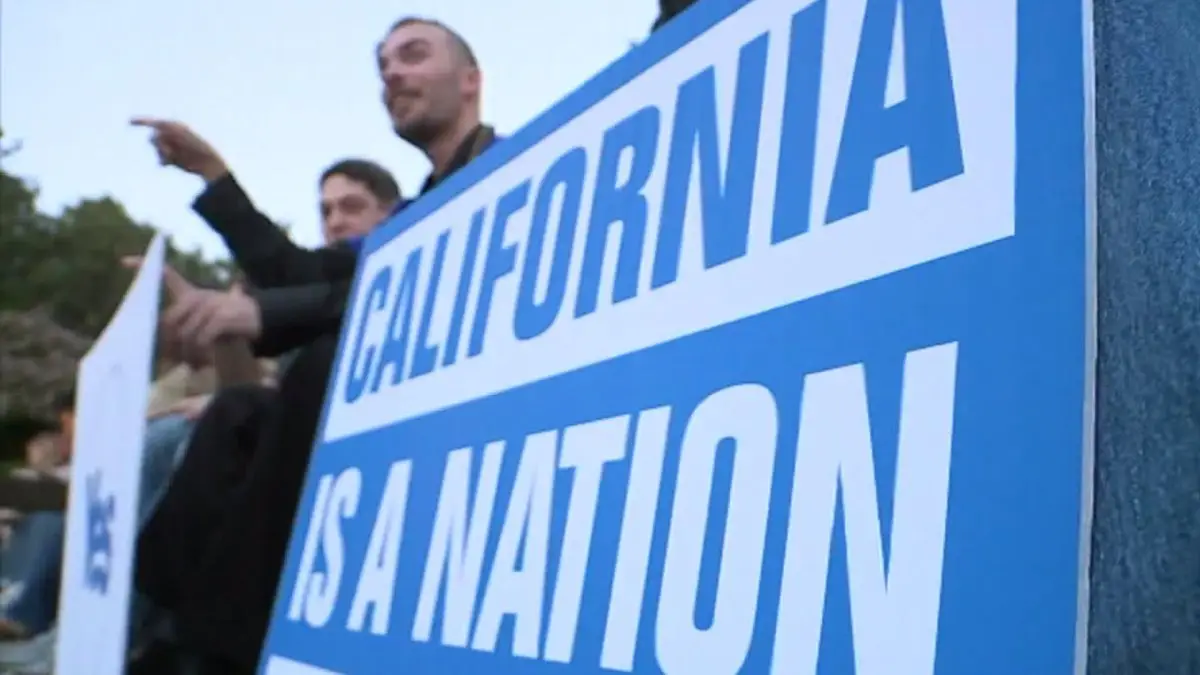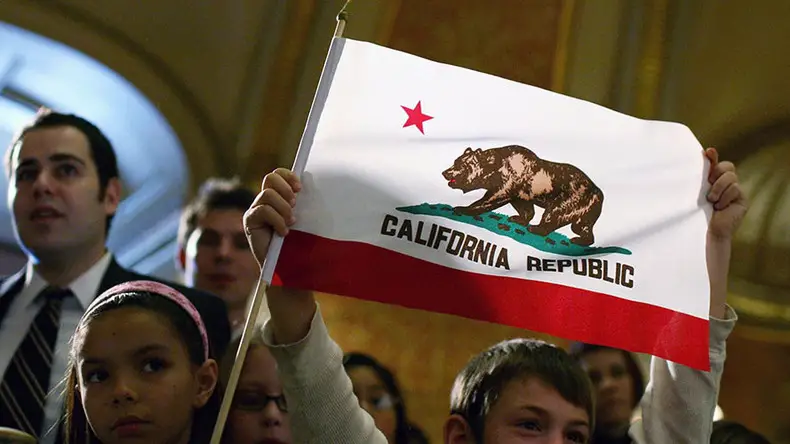A New Republic
President Trump seems to have offended one too many states, as California now prepares for secession.
By Timothy K. DesJarlais, University of Arizona
Imagine you are flying to Los Angeles, maybe to visit a cousin you’ve never met or to spend the weekend sight-seeing.
You land at the airport, disembark your plane and enter the terminal, but you are not greeted by a simple “Welcome to L.A.” sign. Instead, bold letters on the signs read, “Welcome to the Republic of California.” Yes, you are not visiting America’s most populous state. You are visiting a sovereign, independent nation with a government much like our own, except with a Californian twist.
At the moment, the above is just pure fiction, but there are groups in California who are actually trying to make an independent California become a reality. In fact, “Yes California,” the group responsible for leading the secession effort, has already been approved by California’s Secretary of State to begin circulating petitions.
If the group gathers 585,407 signatures by or before July 25, 2017, California’s 2018 ballots will include a measure allowing an independence referendum to take place. Should the measure pass, California will vote on the approved referendum in 2019, deciding if California should remain a U.S. state.
Before you simply dismiss the Calexit secession movement as another extremist group trying to get their place on the front page, a recent Reuters poll showed one in three Californians support a peaceful withdrawal from the United States.
Do I believe California will actually be able to secede from the United States? Absolutely not, but the political geek in me is nonetheless intrigued.
Secession is a big deal, and last time states tried to leave the U.S., the country fought a bloody civil war, leaving our nation in despair for years. Plus, Texas has always tossed around the idea of secession, although the attempts have never materialized into anything substantial. While Texas gets a stigma of being naturally rebellious with the “Lone Star State” mantra, though, California has a tradition of rebelling against the “parent nation.”

In fact, if you take a quick jog through history, you will learn that ten years after Texas became an independent republic (rebelling against Mexico, which owned California at the time), a bunch of Californians in the north under the rule of Mexico, rebelled and created the “California Republic.” The California Republic barely lasted a month, of course, before the United States annexed the cute little republic as the U.S. swiped California from Mexico.
Today, rebellion takes a much different shape, at least in western countries. In the United Kingdom, the Scottish held a referendum on remaining in the UK, while the United Kingdom also held their own referendum on remaining in the EU, which they chose to leave in what is also known as the “Brexit.” So, it only makes sense that a secession in modern America would take place through referendums, not attacking Union soldiers at Fort Sumter.
It’s also important to consider why Californians want to secede and what caused the sudden shift.
Trump is probably the biggest factor, of course, since California strongly opposed him during the 2016 election. Trump’s electoral defeat in California did not translate to a defeat in the election though, as he went on to win the electoral college. Concerned about the prospects of Trump’s presidency and likely upcoming clashes between Sacramento and D.C., it’s no surprise that some would consider secession to be the only viable possibility.
There are of course some formidable roadblocks to becoming independent of the United States, the most apparent of which is the fact the U.S. Constitution itself has no procedure on how a state should leave the union. I guess the founding fathers assumed Americans would have such a blast, no one would ever want to leave.
California does seem to have a love affair with ballot propositions and referendums, so it’s no surprise that their Secretary of State would allow “Yes California” to collect signatures. But, even if they were to reach the threshold of signatures they need, the measure would still have to be approved by California voters not once, but twice. The first vote would allow California to hold the referendum on remaining in the United States, and the second vote would be an actual referendum on remaining a state.

Keep in mind, the earliest the second vote could happen is in 2019, and by then, President Trump may already have Democrat challengers who could be campaigning in California. Therefore, Californians concerned about the presidency may see hope in another candidate rather than in a secession movement, severely deflating Calexit’s momentum and causing the referendum to fail.
Even if the referendum passes, the ballot measure has no actual force of law. Theoretically, if California was to secede, they would require approval from Congress and most or all of the U.S. states. Additionally, a constitutional amendment might have to be made in order to allow California’s independence.
Even if all of the above actually succeed, what will be the implications for California? One problem is roughly 45.8 percent of California is federally-owned land, meaning California would likely have to buy or rent the land from the United States to gain independence.
A second problem is the state of California currently has a debt of $454 billion, and if the state were independent from the United States, it would no longer be receiving federal money, including Medicare, Social Security and many other federal grants and program funds California currently receives. Then, of course, California would have to increase spending and raise its already high taxes even higher to be able to provide the level of service the United States has.
Third, California would also have to deal with establishing its own defense budget. I have no idea what America will do with its military bases in California. Chances are, the state could either purchase them from the United States or agree to a mutual defense treaty in which the United States provides military support to California, like the U.S. already does for South Korea. Even with all of the above, California still has to determine its role in the international community.
In my view, the current fascination for Californian secession is a merely transient one spurred by anti-Trump sentiment. Once the 2020 presidential election kicks off, Californians will likely forget all about Calexit, if not sooner.
Plus, many rural Californians tend to be more conservative and would definitely oppose any secession movement, so while it can be fun to fantasize about an independent California and keep busy during the off-election years, California is here to stay a member of the fifty states.


















California also imports over a 1/3 of it’s electricity and has no means to compensate for that…Cali needs the US far more than the US needs Cali. About the only thing Cali has that is important to the rest of the US is lettuce and pistachios and a few ports that could be moved to the Pac NW or outsourced to Mexico.
Since the case of Texas vs. White in 1869 determined that no state could *unilaterally* secede from the Union, perhaps the best question to ask is: “What would it take to get Congress or a delegation therefrom to agree to California’s secession?” Right now, a Republican Congress might be tempted by the thought of eliminating California’s 55 Electoral College votes and being able to remain red for perpetuity.
Mark, you need to do a little more reading about the state of California. Its GDP is roughly that of the country of France, about the sixth largest in the world. Lettuce and pistachios? You are conveniently forgetting Silicon Valley, the entertainment industry, and a big chunk of the military industrial complex, which could still manufacture and sell military goods after secession (the US already buys a huge percentage of military equipment from abroad).
Furthermore, water and electricity are, to my knowledge, regulated by state compacts, not national laws, so these utilities could theoretically be worked out. In addition to the state debt mentioned above, things like Social Security and pensions that are housed with the US government would have to be negotiated. Other logistics (currency, government, etc.) might not be so tough to determine: there are many Canadians who favor adding Washington, Oregon, and California to their nation (the “Cascadia Exit”), and there is some thought that Hawaii and Alaska would join them.
Dismissing Calexit out of hand is not wise, as is proven by the “impossible” ascent of Donald Trump to the presidency. The United States (and other major powers) undergo regular cycles of upheaval every 80 years or so; the country is overdue for another major change of one sort or another, and the current political climate has made it clear the country is significantly divided along philosophical lines. The map of the US has changed drastically over the last several hundred years, and there is no guarantee it won’t change again.